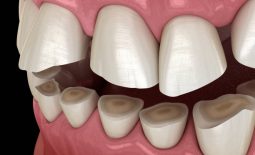Are my metal fillings safe? Part 1
Perhaps no other material in the healthcare industry is as controversial as dental amalgam. Despite being used around the world for decades as the workhorse of dental restorative materials, it has been plagued with controversy from the beginning and accused of causing everything from sensitive teeth to insanity. Still it has managed to survive, and to this day remains the most commonly-used dental filling material – by far. Let’s take a look at what makes amalgam use so controversial, and how it has managed to remain so popular despite more advanced, and arguably better, materials being available.
The main ingredient in dental amalgam is mercury, representing about 50% of the makeup, with the rest being silver, tin, copper, and other trace metals. Mercury, in its pure form, is extremely toxic and can cause damage to the brain, kidneys, lungs, and other systems. Mercury in fillings is combined with other materials, or amalgamated, and thus not in its pure form. So the big question is: how much pure mercury from amalgam fillings gets released into the body?
When an amalgam filling is placed, the material is mixed and adapted to the prepared tooth and allowed to set up. During setting, the mercury bonds with the other ingredients and hardens, producing a durable, final restoration that “traps” the mercury and prevents its release into the body. If the filling remains completely undisturbed then that would be the end of it, but it turns out that chewing causes a small amount of mercury to be released in the form of “mercury vapor.”
The World Health Organization (WHO) established the maximum amount of mercury the body can tolerate at 300-500 micrograms per day (a microgram, µg, is a millionth of a gram) and still have no ill effects. As for the amount of mercury vapor released during chewing, the average person, with around five amalgam fillings, receives about 2 µg per meal. Assuming three meals per day, that comes to about 6 µg, still well short of the WHO limits.
The experts therefore conclude, while admitting some mercury is released via chewing, that amalgam fillings are a safe and acceptable restorative material. To bolster their claim, they cite numerous studies that have failed to show a link between amalgam fillings and various diseases. Detractors contend that mercury is accumulative and no amount is safe to ingest. They also cite their own anecdotal reports of people who have had their amalgam fillings removed and subsequently recovered from these afore-mentioned various diseases.
So who’s right? Unfortunately, we will never know with 100% certainty. Medical research doesn’t work that way; there are no absolutes. And perhaps that’s the rationale behind some recent changes in the dental community’s attitude on amalgam, basically saying “We’re confident it’s safe, but why take any unnecessary chances?” Recently, the FDA altered its position on amalgam by effectively saying that pregnant women and children under age 6 should consider other options. While this might seem like a relatively innocuous statement, it actually represents a tectonic shift in the establishment’s position on amalgam. For the first time they are saying that certain higher-risk individuals may be adversely affected by amalgam placement, or at the very least, they just can’t be sure.
For the rest of the post, check out Part 2 here.


